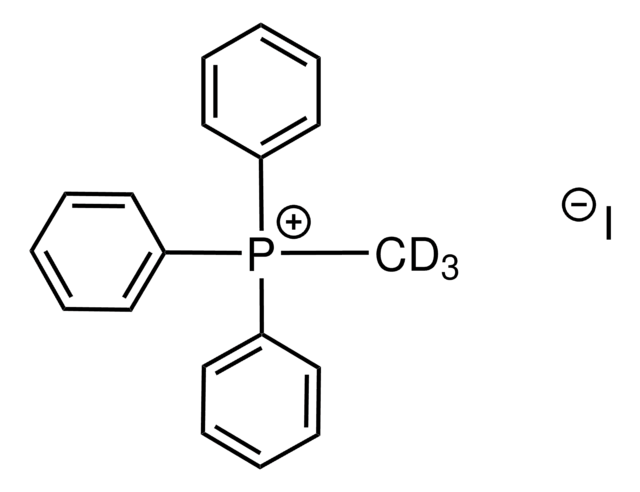176036
Iodomethane-d3
≥99.5 atom % D, ≥99% (CP), contains copper as stabilizer
Synonyme(s) :
Deuterated iodomethane, Methyl-d3 Iodide
About This Item
Produits recommandés
Densité de vapeur
4.89 (vs air)
Pression de vapeur
22.76 psi ( 55 °C)
6.61 psi ( 20 °C)
Pureté isotopique
≥99.5 atom % D
Pureté
≥99% (CP)
Forme
liquid
Contient
copper as stabilizer
Indice de réfraction
n20/D 1.5262 (lit.)
Point d'ébullition
42 °C (lit.)
Pf
−66.5 °C (lit.)
Densité
2.329 g/mL at 25 °C
Application(s)
environmental
Changement de masse
M+3
Température de stockage
2-8°C
Chaîne SMILES
[2H]C([2H])([2H])I
InChI
1S/CH3I/c1-2/h1H3/i1D3
Clé InChI
INQOMBQAUSQDDS-FIBGUPNXSA-N
Vous recherchez des produits similaires ? Visite Guide de comparaison des produits
Description générale
Conditionnement
À utiliser avec
Mention d'avertissement
Danger
Mentions de danger
Classification des risques
Acute Tox. 3 Inhalation - Acute Tox. 3 Oral - Acute Tox. 4 Dermal - Aquatic Acute 1 - Aquatic Chronic 1 - Carc. 2 - Eye Irrit. 2 - Skin Irrit. 2 - STOT SE 3
Organes cibles
Respiratory system
Code de la classe de stockage
6.1B - Non-combustible acute toxic Cat. 1 and 2 / very toxic hazardous materials
Classe de danger pour l'eau (WGK)
WGK 3
Point d'éclair (°F)
Not applicable
Point d'éclair (°C)
Not applicable
Certificats d'analyse (COA)
Recherchez un Certificats d'analyse (COA) en saisissant le numéro de lot du produit. Les numéros de lot figurent sur l'étiquette du produit après les mots "Lot" ou "Batch".
Déjà en possession de ce produit ?
Retrouvez la documentation relative aux produits que vous avez récemment achetés dans la Bibliothèque de documents.
Les clients ont également consulté
Notre équipe de scientifiques dispose d'une expérience dans tous les secteurs de la recherche, notamment en sciences de la vie, science des matériaux, synthèse chimique, chromatographie, analyse et dans de nombreux autres domaines..
Contacter notre Service technique














